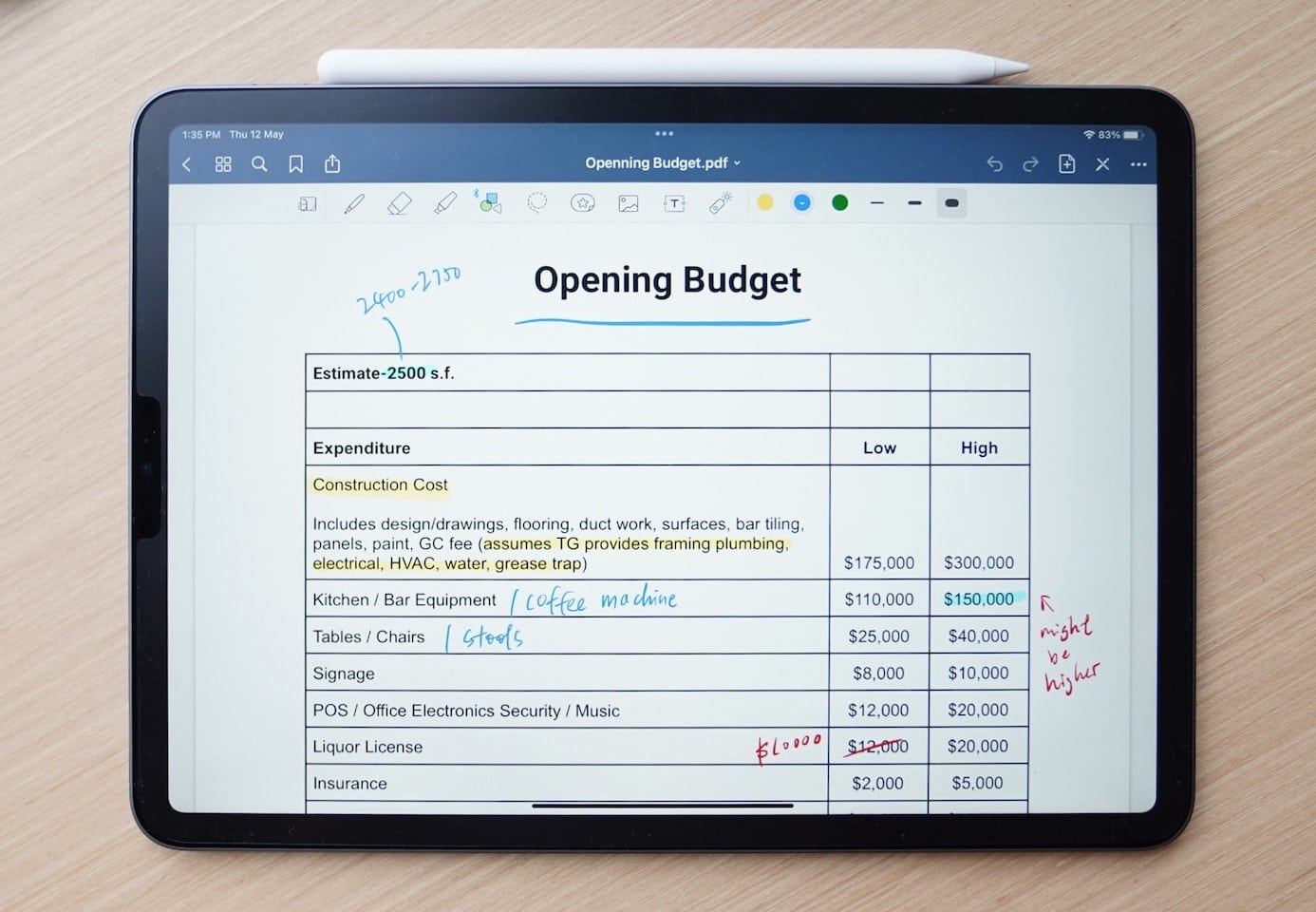Have you already planned your budget for next year? If not, you should first determine your current operating costs. You can then consider how much extra money you need to achieve your goals: Do you want to hire more employees or are you planning a major advertising campaign? No matter what you have in mind, this article will provide you with valuable tips and a template for budget planning.
The following article deals with budget planning in companies and the best way to approach it. For private households, we recommend a budget book.
What is budget planning?
As the name suggests, budget planning involves the allocation of budgets and the planning of resources. Budget planning is usually carried out for the entire company, while detailed budgeting is carried out for specific departments or individual projects. The resulting budget plan specifies where the available money in the company should go and which goals are to be achieved with the budget in which period of time.
Forward-looking budget planning helps you to allocate money and resources sensibly to departments and projects and thus achieve your business and project goals. With a binding budget plan, you can also ensure that your managers define clear goals and take efficient measures to achieve them. Budget planning can have a motivating effect on your employees, as they can keep an eye on the targets, measure success and be rewarded for it.
Budget planning goes hand in hand with strategic corporate planning
Operational budget planning is part of short-term financial planning, in which you estimate your future income, expenses and costs. In principle, budget planning is carried out for the future, usually for the following financial year. You use the data from the current and/or previous financial year to derive forecasts for future developments and distribute the budget.
Strategic budget planning for the next two to five years is also quite common. This helps you to make long-term business decisions that will drive your company forward and ensure its success, such as opening new locations. However, the further into the future the planning horizon is, the more difficult and uncertain it is to make an accurate forecast.

Initially, a simple table may be sufficient for an overview, but in the long term it makes sense to use a database with more functions for your budgeting.
What types of budget planning are there?
What is the best approach to budget planning? There are three procedures that have proven particularly effective:
- Top-down: The management determines the scope and distribution of the budget and the department/project managers then plan the measures that they can implement with it.
- Bottom-up: Here, the department/project managers themselves determine what budget they need for their tasks and pass the budget planning on to the decision-makers. They add up the sub-budgets, compare them with the overall budget and determine what is approved.
- Countercurrent procedure: The management sets targets, but does not go into detail regarding budgeting. The department/project managers then develop sub-goals, measures and concretize the budget planning. Finally, the management level must review and approve the budget plan.
7 tips for the perfect budget plan
Regardless of which approach you choose, there are a few points to bear in mind when creating budget plans. The following tips assume that an initial budget plan already exists or that a comparison of budgets and expenses/costs from previous years is possible.
1. analyze data carefully
Towards the end of the current financial year, evaluate your company's performance based on the last budget plan and compare your forecast at that time with the actual figures. Do you still have money left over or have you already exceeded your budget? Are the targets you set still achievable or have they already been achieved?
2. explain discrepancies
If there are major deviations from the budget plan, you should find out whether there have been significant changes within or outside your company that you could not foresee in your forecast. As soon as you know the causes, you can initiate effective countermeasures or plan more budget in the future to achieve your goals.
3. set realistic goals
Do not increase the goals you want to achieve with your budget to immeasurable proportions. Budget planning should be realistic and match the expected success of the company.
4. avoid inefficiency
Money and resources should be used as efficiently (without waste) and effectively (to achieve objectives) as possible. However, it can be counterproductive if you simply cut the funds that a department has not used from next year's budget plan. Instead of rewarding the economical use of resources, this encourages departments to use up the budget in the following year, regardless of whether measures make sense or not.
5. recognize potential for conflict
The size of the budget can quickly lead to competitive or status thinking among managers ("Whoever has more budget is more important"). Therefore, make sure you recognize conflicts early on and communicate clearly that all departments and projects contribute to the overall success.

Status thinking and conflicts between managers or entire departments can make efficient budget planning more difficult and jeopardize the corporate strategy.
6. demand transparency
Particularly in internal power struggles, results are often glossed over or exaggerated targets formulated in order to obtain a better budget. Be aware of this and take a critical look at what the funds are needed for and why. Ultimately, you should allocate your budget in such a way that your company achieves its business objectives.
7. remain flexible
Specific budgeting must remain adaptable, as it is partly based on assumptions for the future that cannot be predicted with certainty. If things develop differently than expected, you should react flexibly.
Budget planning in project management
A popular area of application for budget planning is project management. It provides you with an overview of what is possible in a project. Depending on your resources, you can decide, for example, whether you want to hire external service providers or prefer to manage the majority yourself. It also makes it clear whether the money will only cover the bare essentials or a high-end solution.
Especially if customers or other external stakeholders are involved in a project, they will almost certainly demand transparent and realistic budgeting. In this case, a budget plan is essential and can be used to negotiate financial resources.
Budget planning should definitely take place before the project starts. It determines whether and to what extent a project is feasible. Budget planning reveals the objectives, opportunities and risks. You should therefore start budget planning as early as possible.
As with budget planning for entire companies, old meets new in project management. When it comes to calculations and cost estimates, you need to review the past. How well did budget planning work in previous projects and what should you adjust this time? Creating a budget plan can be time-consuming, but it gives you the opportunity to evaluate old projects and make new ones even better.
An example of how you can implement budget planning
Let's now take a look at budget planning in practice. Let's assume that a growing company with currently around 15 employees wants to plan its budget for 2024. The company offers services, which means that there are no production costs (e.g. for materials, machines, storage).
First, management analyzes all expenses and operating costs in 2023 and compares the figures with the 2023 budget plan. If the budget for a cost center has been exceeded, the responsible managers explain why the estimated budget was not sufficient. They then also formulate their expectations and targets for the next year.
Based on these analyses and targets, the managers communicate how much money they want to spend in a bottom-up process. The management then defines a realistic overall budget for 2024 - and the targets to be achieved with it.
Create your budget plans with SeaTable
Many people use Excel spreadsheets for their budget planning, but these only offer limited functions and display options. You can register for free in SeaTable and start directly with the template shown above. You can bundle and evaluate all cost centers, targets, budgets and expenses in such a central database.
Give your managers budget responsibility and use SeaTable as a collaboration tool to work on the budget plan with several departments at the same time. This allows you to adjust the budget plan throughout the year, track expenses in real time and always have an overview of the current budget.
Try our free budget planning template and discover other exciting use cases that you can implement with SeaTable.




